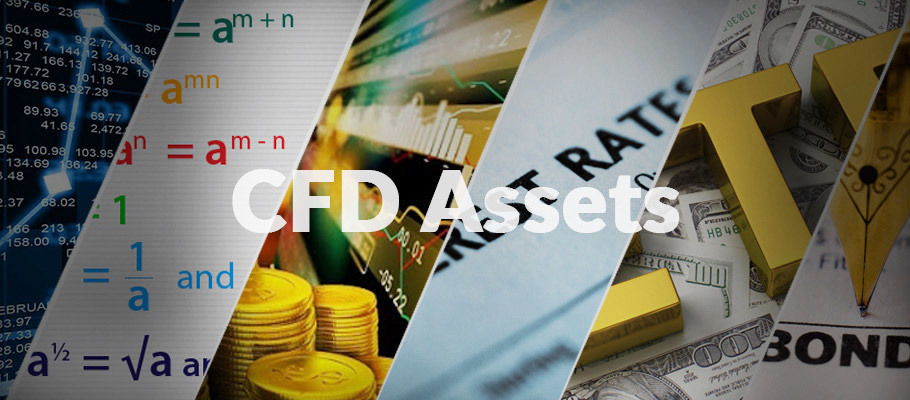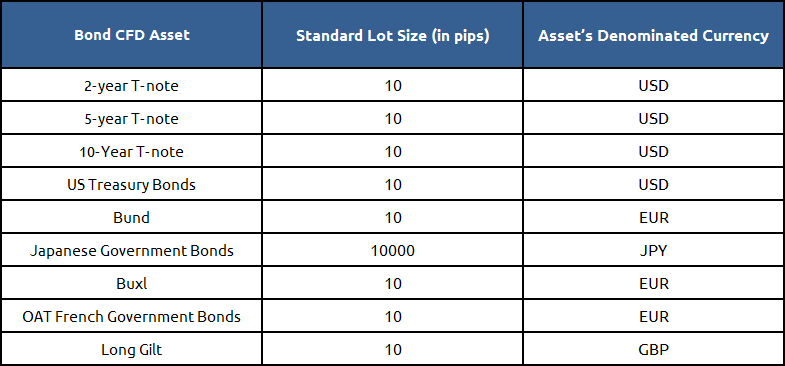
CFD stands for Contract-for-Difference. A CFD is a financial derivative instrument which can be bought or sold in the financial markets. CFDs are called derivatives because they are “derived from” the underlying instruments. They are what you may call the mirror image of the real assets traded in the different financial markets. So while they are not the actual, physical assets, they represent those assets. The pricing and contract specifications of CFDs mimic those of the parent assets. Therefore, trading the CFDs is like trading the actual assets.
The main types of CFD assets that are available for trading are:
A description of each of these CFD assets is presented below.
Stocks are units of ownership of publicly quoted companies. Publicly quoted companies are companies which are listed on a national stock exchange of a country. The stock exchange is also referred to as the secondary market, which is where anyone can buy or sell shares of thousands of companies that are listed.
Trading stocks as CFDs allows the trader to place trades that are based on the movements of the stock price of the underlying equity or shares. In other words, you do not need to own the underlying shares themselves to trade these stocks. There are advantages to this arrangement. Many national stock exchanges that offer the actual shares of companies for trading require you to open an account with a broker located and regulated in that country. This practically shuts off a lot of people from trading the popular secondary markets in the US, UK, Germany, Australia, Japan, Hong Kong, etc.
But with stock CFD trading, all you need to do is to open an account with just one broker that offers these stocks as CFD assets, all from one platform. You can typically expect to find stocks that are pulled from the US exchanges (Nasdaq 100, S&P 500 and Dow Jones), the UK (FSTE100), Japan (Nikkei 225), Hong Kong (Hang Seng), China (Shanghai Composite), Singapore (Straits Times), Australia (ASX 200), etc. These are all traded from one platform and from one brokerage account, thus giving you exposure to limitless opportunities in stocks from several markets.
You can therefore trade Facebook’s acquisition of an Indian firm, or trade Tesla’s vehicle sales data, and later on you can decide to trade information about Vodafone or trade other stocks as information becomes available from around the world.
Trading of stocks CFDs usually occurs when the stock exchange in which the parent stock is listed is open for business, which means that a particular stock cannot be traded on a 24-hour basis. However, you can trade stocks round the clock simply by trading them from the various times zones. You can open with the Asian time zones, continue with the stocks from the FTSE100 or German DAX, and round up the day with stock CFDs listed on the Nasdaq or Dow Jones.
The trading of stock CFDs is a leveraged activity. However, the leverage provided is generally not high, which means you need more money as capital and margin than if you were trading currencies or commodities.
If you are averse to trying to pick stocks on an individual basis, then you can decide to trade the movement of an entire stock exchange. The movements of stocks listed on a national stock exchange are weighted into an index, which then serves as the measure of the volatility and movement of the entire exchange. Therefore, instead of trading Apple, Tesla, Amazon and Microsoft, you can decide to trade the entire Nasdaq index if you see that these 4 stocks and others are swaying the market direction on the day. This provides a more direct and technically easier way to trade the entire stock composition of the national exchange.
A great thing about stock index trading (i.e. trading indices is that you will discover that certain indices are correlated. You will also find out that certain indices follow the news better than currencies. For instance, if you want to trade the Non-Farm Payrolls report and you are unsure as to how the US Dollar will react on the various currency pairs, you can decide to trade the US stock indices instead.
You will also find that indices tend to show a similar response to a global event. For instance, the COVID-19 pandemic has produced similar responses on several indices across the world. You see a pattern where Asian markets may get spooked and suffer a drop, then the European markets follow suit and the US markets react the same way. Alternatively, you may see the US indices react to a particular news release in a particular way, and by the time the Asian market traders are awake, they follow suit.
These are some of the advantages that trading stock indices can bring your way. When you talk of simplicity and predictability, indices are a CFD type you need to consider. Popular indices traded as CFDs include the following:
Index CFDs are also leveraged, and leverage is generally higher than is obtainable for stocks CFDs, making them a cheaper option to trade as well.
Commodities are generally divided into three categories, simply for the purpose of classification:
Due to the innate differences in each subclass of commodities, this group of CFD assets is perhaps the most complex of all CFD instruments to trade. Commodity CFDs track the price changes in the underlying commodity markets without requiring the trader to own them in a physical form. Therefore, a crude oil CFD trader only trades the price changes of a barrel of crude oil without having to own a crude oil storage facility. You do not need to load a warehouse with cocoa beans if you are trading a cocoa CFD product.
Commodity CFDs tend to be very volatile and require a lot of capital to trade profitably because of the wild price swings. The risk element is also quite high, as was shown recently when a barrel of crude oil for the West Texas Intermediate benchmark fell into negative territory.
Commodity CFD trading is popular because commodities are used as a gauge of the health of the global economy and risk sentiment. When the global economic projections are optimistic, commodity prices tend to rise as a result of the increased risk appetite of traders. When the global economy is in upheaval, traders assume a “risk-off” sentiment and commodity prices fall. Some commodities are also correlated with currencies. For instance, crude oil is correlated with the Canadian Dollar, US Dollar, Norwegian Krone and Japanese Yen because these countries are either net exporters (Canada, Norway and US as from 2015) or net importers (Japan and the US up until 2014). Gold is correlated with the Australian Dollar, as is copper. This is because Australia exports these to its biggest trading partner, China. Upheaval in the Chinese economy causes commodity CFD prices to tumble because China is the world’s largest commodity importer. Match the associations and you can understand why copper CFD prices collapsed when the COVID-19 epidemic broke out in China.
Interest rate CFDs are tradable assets based on some of the important interest rate quotes around the world. The CFDs on interest rates allows traders to hold short-term positions on the direction of selected interest rates from around the world. Contracts typically last a maximum of three months.
Why would traders want to trade changes in interest rates? You may decide to trade against perceived future changes in short-term interest rates, especially when there is market upheaval as we currently have with the COVID-19 pandemic. You may also decide to use interest rate CFD to act as a hedge against any other investments that could be affected by interest rate changes.
The popularly traded pure interest rate CFDs are as follows:
Interest rate CFDs are not very common and only few platforms carry them.
What are exchange traded funds? An exchange traded fund (ETF) is a basket of assets that is compiled into a single fund, which can then be treated like a company stock, and be bought or sold on an exchange. Look at an ETF the way you would look at a Christmas hamper. A hamper is usually a basket, and within it you get to see all kinds of stuff placed in it and given a decoration. The hamper is then sold in supermarkets as a single entity, which saves you the stress of buying the items contained within it individually.
With an ETF, each component asset loses a bit of its individuality, just the way you would find with a Christmas hamper. An ETF basket can be composed to track either a single market, or a group of markets.
There are literally thousands of ETFs available on the market. However, ETFs can be traded as Contracts-for-Difference assets. In this case, you do not own the ETFs themselves, but you trade the price changes on the underlying ETF asset. That way, you get the benefits of the price differentials of the ETF without actually owning the ETF asset itself.
There are various reasons why you may want to trade ETFs. The most common reason is for traders to be able to pool assets from different markets into one place to trade at once, without having to open multiple brokerage accounts in various locations, trying to look for the best assets to trade at any time. Also some ETFs are created in a unique manner, allowing the traders to get exposure to uniquely harnessed assets that would otherwise not have been possible.
Furthermore, ETF CFDs are leveraged assets, which allows you to hold positions larger than your capital could have held. This has potential to give you larger profits than you would ordinarily have made for successful trades.
CFDs can be traded on fixed income securities known as government bonds or treasury bills. These are assets based on government or corporate debt, but CFDs on government debt are more secure and are the ones offered for trading as CFD assets. You can trade bond CFDs on a leveraged basis.
There are more than 425 bond/interest rate CFDs spread across different markets and countries. Just a few are listed here as these are the most popular ones.

Instead of trying to buy into the actual bond assets from country to country (which is impossible), you can simply pick a broker that offers several bond assets in one platform, and trade the CFDs that mirror the actual bonds. This is the advantage that bond CFDs provide to those who trade them, allowing them to benefit from periods when there is a lot of change in interest rates across several countries.